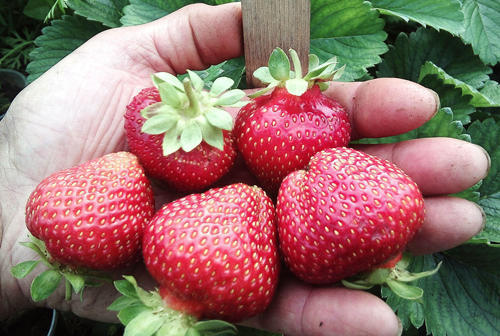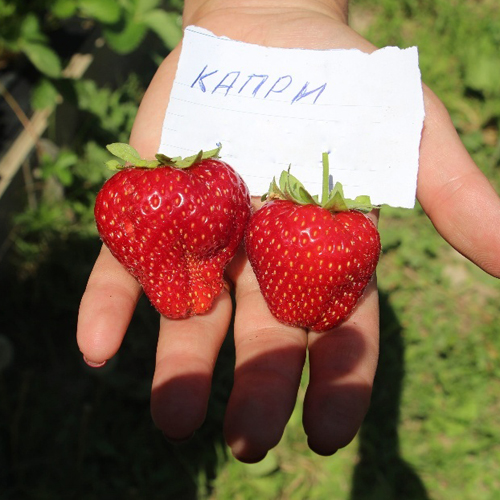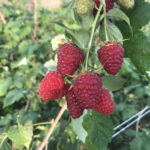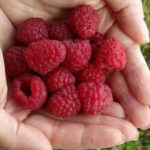Capri strawberry variety
Capri is a remontant variety of garden strawberries (strawberries) for universal use. It was bred in Italy by crossing the CIVRI-30 variety and the hybrid form R6R1-26. The originator and patent holder is the Consortium of Italian Nurseries (CIV). Our heroine is appreciated for high yield, excellent taste of berries and their excellent appearance, heat resistance and drought resistance, as well as good immunity to diseases. Strawberries are suitable for cultivation in a summer cottage for personal consumption, but the main area of their application is commercial cultivation for the sale of fresh products on the market.

The plant is medium-sized, rather compact, the foliage is medium. The formation is scarce. Leaves are medium in size, medium fringed, light green, shiny, with wide denticles at the edges. The flowers of the variety are bisexual, white. Peduncles are powerful, erect, and are laid on the ground under the weight of the crop.
Capri berries are medium and large in size, spectacular, of regular conical shape, generally very one-dimensional, but by the end of the season they do not differ in uniformity of shapes, fruits with an elongated tip can be observed, in particular. The skin is thin, but strong, bright red, shiny, when fully ripe it acquires a dark red hue. Achenes yellow, shallowly depressed. The strawberry pulp is red, dense, but not firm, juicy, aromatic, with a pleasant uniform texture, without voids.

The taste of the variety is very good, according to reviews, it can be called one of the best among remontants in terms of consumer characteristics. Dessert berries, very pleasant sweet taste, not devoid of a subtle hint of sourness. One of the main advantages of Capri is that the sugar content of the fruit does not deteriorate even in rainy seasons, and by the end of fruiting, the taste remains at its best, which some popular remontants cannot boast of, for example Irma.
Strawberries are versatile in use, ideal for fresh consumption and decorating various desserts, also well suited for processing and freezing. The fruits tolerate transportation well and are well stored, they look very attractive in appearance, so we can safely say that Capri is definitely a good choice for growing commercially. Another nice bonus - the berries are easily detached from the stalk, the collection is quick and productive.

The average weight of fruits in the season is 25-30 grams, and larger specimens can form, up to 35 grams. In general, the berries are very one-dimensional throughout the season, but they can become smaller with illiterate agricultural technology. Fruiting of strawberries is almost continuous, undulating, starts in early summer and ends in late autumn. Shrinking of fruits is usually observed in the middle of the season, during the heat of summer, and by autumn the variety is "gaining momentum" again. Capri's yield is high, up to 2 kg of berries per bush and even more. But it is worthwhile to understand that the variety is an intensive type, therefore its productivity is extremely dependent on agricultural technology. Under ordinary garden conditions, it is quite possible to count on a yield of up to 1 kg of fruits per plant, provided that not the most ideal care.
Strawberries are resistant to gray rot and various spots, in general, they have quite good immunity, but this does not mean that they do not need timely preventive treatments, especially when grown for commercial purposes. According to gardeners, our heroine feels great with the most minimal treatments, compared to other varieties she looks advantageous in this regard. The variety has a fairly good winter hardiness, winters well in the conditions of Central Russia, but a shelter will never be superfluous, of course. In the spring, it is also advisable to take care of covering materials, since return frosts can damage the flowers.
Capri boasts excellent heat resistance and drought resistance, the plants thrive in hot regions, they bear fruit consistently with high quality even during periods of intense heat, the berries are not baked in the sun. Of course, it will not be superfluous to take care of the shading of the plantings, and it is imperative to provide strawberries with regular watering so that the yield remains at a high level.
In agricultural technology, the variety is quite simple, it requires the timely and high-quality implementation of all standard measures. Variety of the intensive type, therefore, it is characterized by one simple pattern - the better you take care of your plantings, the more you get. By the way, Capri is suitable for growing using compacted technology, planting is carried out according to the standard scheme (about 25 cm between bushes), but some farmers and gardeners plant even more densely. Of course, do not thicken the plantings too much, this will have a bad effect on the plants. The main nuance of care is the need for regular abundant feeding. The rest of the agricultural technology is typical for the culture as a whole.
Capri is a very good remontant and has received many accolades. Among other varieties of neutral daylight hours, it favorably stands out for its excellent taste and heat resistance, as well as quite good immunity. This strawberry has few downsides, they are relative: the non-uniform shape of the berries at the end of the fruiting season and poor formation (which, in principle, can be attributed to the pluses). However, these shortcomings are not critical and are typical, perhaps, for many remontants.









Capri is not resistant to mottling. Usov, yes, gives very little. About 3-4 years ago it was a hit, like a supernova. Then his popularity faded away. As for example, and neutral Linosa. Now many have abandoned it. Now the new heroes of the berry world. He cannot reach them for a number of reasons. But Capri berries really give a lot, they bloom almost constantly ...
I love Capri for its consistency, it gives a berry in any weather. Usov gives moderate. This variety is a hard worker. The children are happy, this is the most important thing.
Maxim from Kherson as for the new heroes of the berry world, such as Cabrillo, this is what they send us from Holland and Italy. It is best to see what is grown there. Capri is difficult to breed, that's all. Almost all farms are used to pulling a berry and a mustache. And the Capri variety is simply killed in 2 years. If you have Capri for berries in the sun, and the mother liquor is 50% shaded and provided with a triple dose of watering with the addition of nitrogen, then the mustache is in bulk. Of course, you have to tear the flower stalks, but there are an order of magnitude less of them than on berry plantings. A real hard worker with great taste. If you give normal fungicides before the first flowering, and then do not forget about biological + phosphites. Then there are almost no spots until October. My taste is the best, this year, of course, there was a competitor to Altess, but Capri has been from Italy for 5 years now and there are almost no complaints about it.